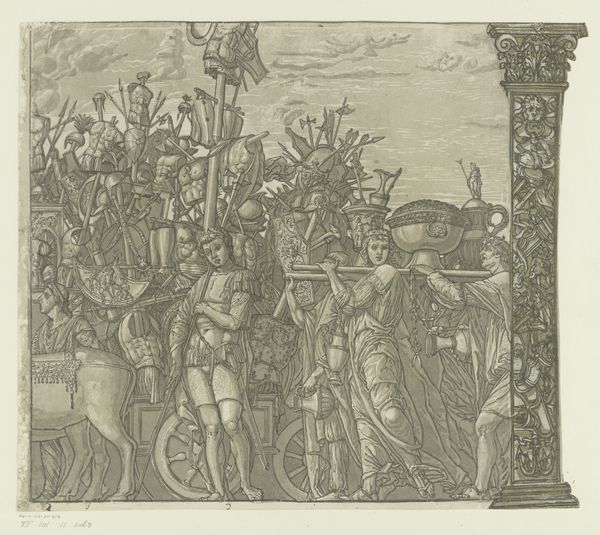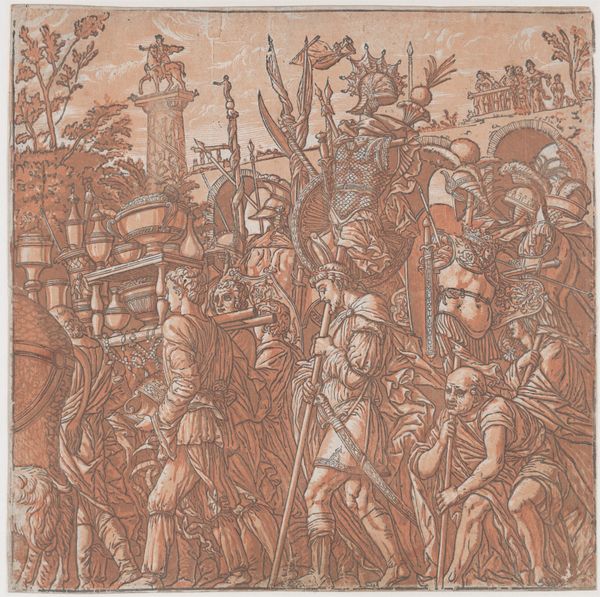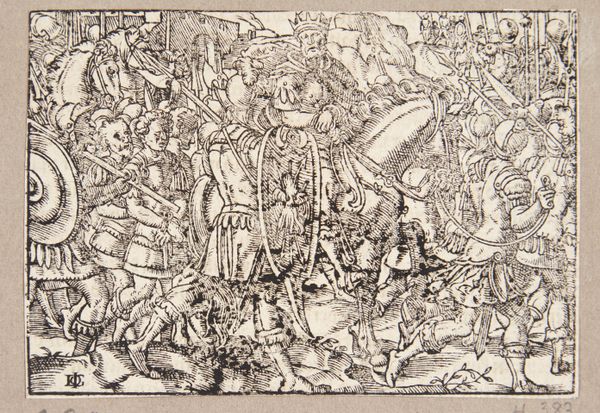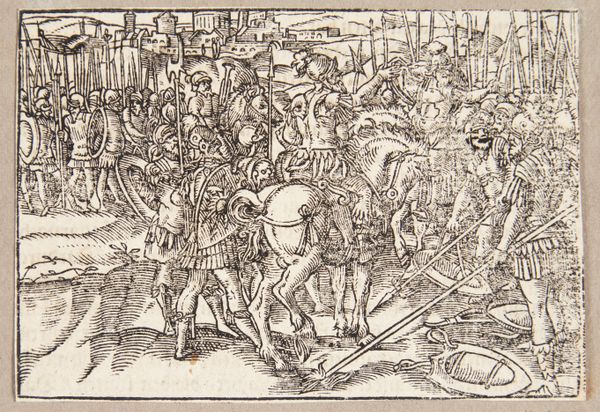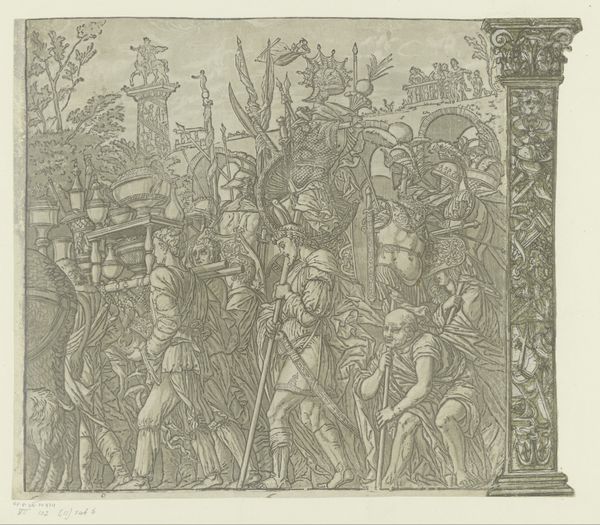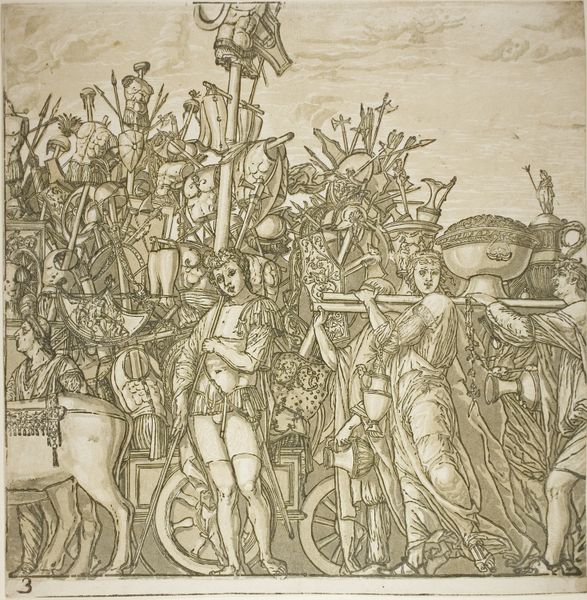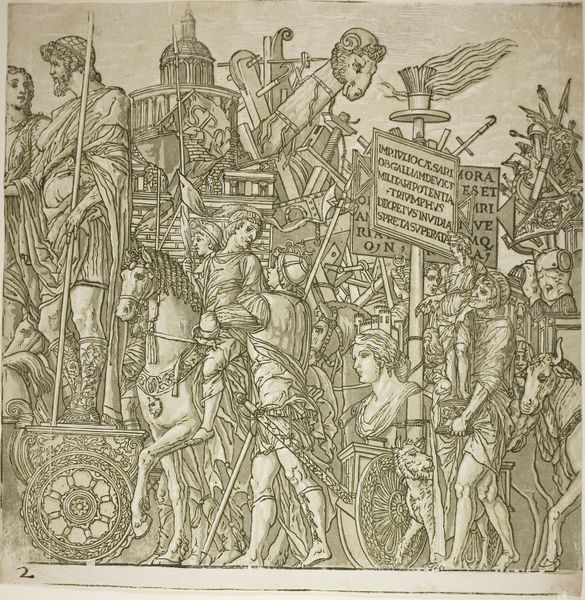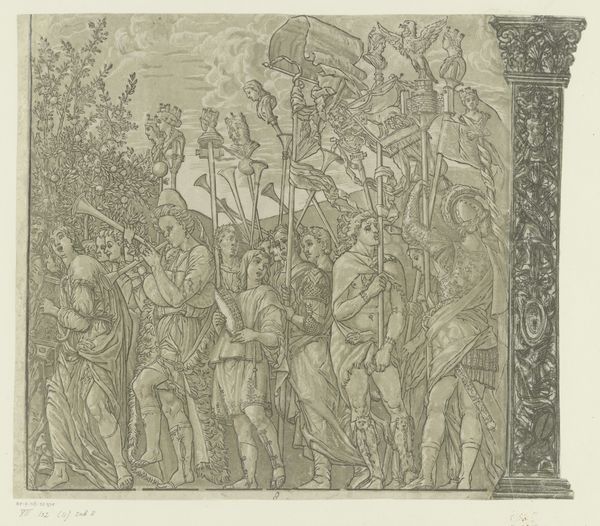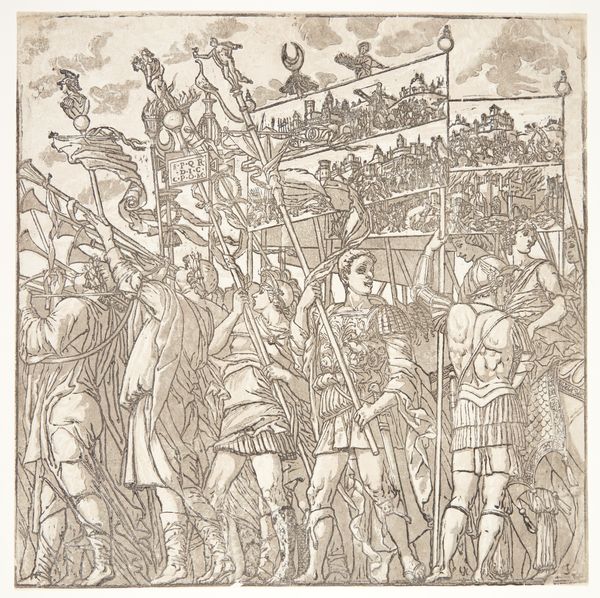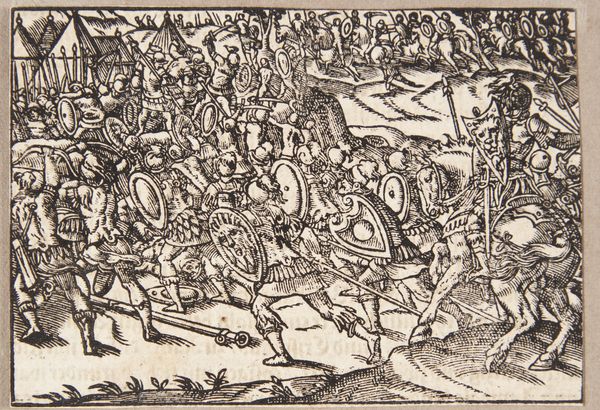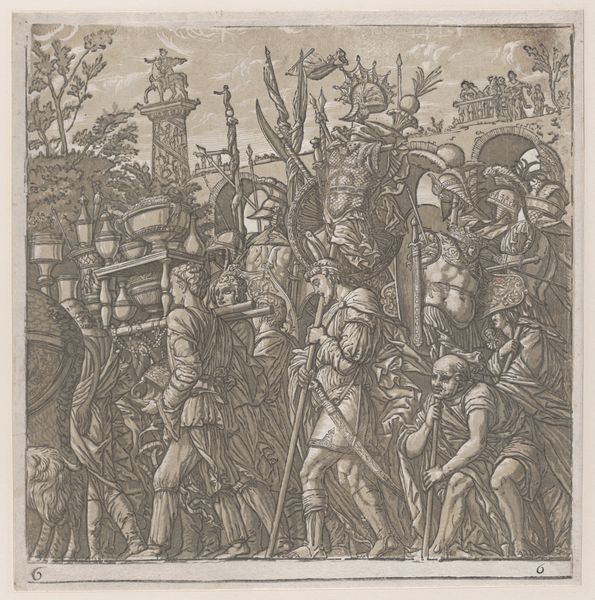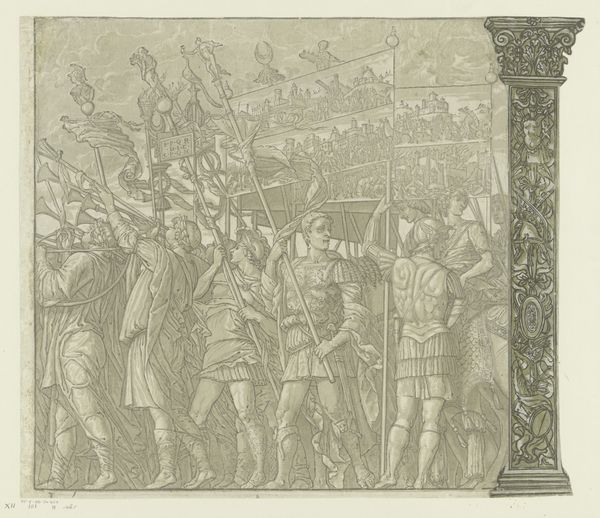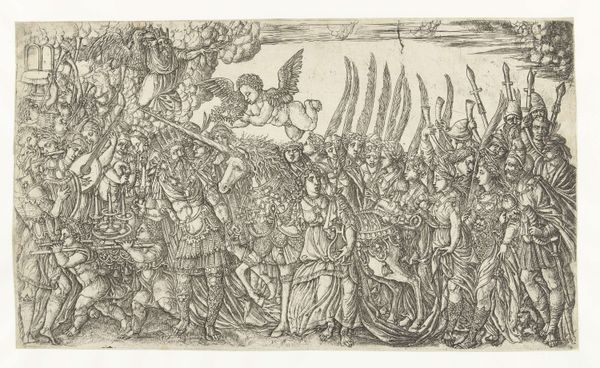
drawing, print, paper, engraving
#
drawing
# print
#
figuration
#
paper
#
history-painting
#
italian-renaissance
#
engraving
Dimensions: 381 × 374 mm
Copyright: Public Domain
Curator: Here we have Andrea Andreani’s "Triumph of Caesar," a striking engraving from 1599, currently housed at The Art Institute of Chicago. It’s an elaborate scene rendered on paper with remarkable detail. Editor: My immediate impression is the sheer density. There are so many figures packed into the frame. It feels almost overwhelming, like a crush of bodies and objects moving forward. The tonal range, too, seems deliberately limited, emphasizing the linear aspects of the composition. Curator: Indeed, the limited tonal range is characteristic of the chiaroscuro woodcut technique Andreani employed. This print aims to capture the grandeur of a Roman triumph, a public celebration of military success. Andrea Mantegna completed a series of paintings on this topic approximately a century before Andreani made his print. This series probably inspired this engraving. The visual culture around this period shows elites demonstrating and securing their status through art. Editor: I see echoes of that aspiration in this work. However, I can’t help but consider what isn't shown: the realities of war, the subjugation and displacement of conquered people. Triumphal imagery often conveniently forgets about the bloodshed and social upheaval upon which the ‘triumph’ is built. Looking closely, the figures seem idealized, almost staged. The lack of diversity—the racial and class uniformity— is rather striking. Curator: Absolutely, these images must be situated within the complex power dynamics of the time. The focus was undeniably on celebrating the victor and reinforcing prevailing social hierarchies. However, to reduce it solely to propaganda risks overlooking Andreani's artistic skill in capturing dynamism, with this overwhelming rush that, from a social-historical perspective, displays a demonstration of might. Editor: It’s about holding both the artistry and the historical context, and not erasing the problematic aspects inherent in the narrative it promotes. I'm intrigued by how this piece interacts with contemporary conversations around historical representation and its impact on modern viewers. It sparks critical dialogue about history, representation, and power. Curator: It certainly does, prompting us to critically examine the values and narratives embedded within these historical representations, considering their ongoing relevance and impact. Editor: The print ultimately serves as a mirror reflecting not just the past but also our present engagement with it.
Comments
No comments
Be the first to comment and join the conversation on the ultimate creative platform.
